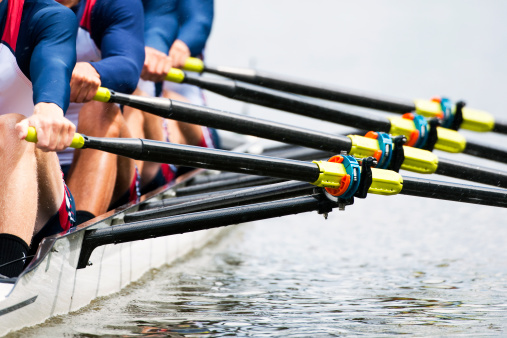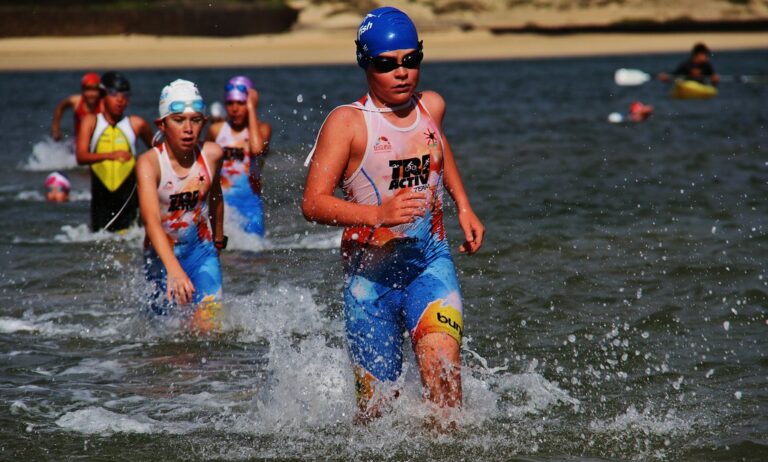General Rules of Surfboat Rowing
Surfboat rowing requires precision and practice. Before you hit the waves, knowing the general rules is paramount for a successful outing. From safety precautions to understanding water conditions, each aspect plays a vital role in your team's performance. But what about the lesser-known rules that could make or break your rowing experience?
Safety Precautions During Rowing
What are the essential safety precautions you need to follow while rowing a surfboat? When it comes to emergency response and injury prevention in surfboat rowing, there are critical measures to keep in mind. Firstly, always ensure that all crew members are equipped with life jackets that fit properly and are in good condition. In the event of a capsize or any other emergency, these jackets are your first line of defense against potential harm. Additionally, it is crucial to have a clear emergency response plan in place before setting out on the water. Make sure all crew members are aware of their roles and responsibilities in case of an emergency.
Moreover, injury prevention starts with proper technique and form. It is essential to receive adequate training on rowing techniques to avoid straining muscles or causing unnecessary injuries. Remember to warm up before rowing to prepare your body for the physical exertion it is about to undertake. Furthermore, staying hydrated and maintaining good overall physical fitness are key factors in injury prevention. Listen to your body and do not push yourself beyond your limits, as this can lead to accidents or injuries. By following these safety precautions related to emergency response and injury prevention, you can enjoy surfboat rowing to the fullest while staying safe and sound.
Equipment Maintenance and Inspection
To ensure the safety and efficiency of your surfboat rowing experience, regularly inspect and maintain all equipment used in the sport. Proper equipment maintenance is crucial for a successful rowing session and for prolonging the life of your gear. Here are some essential tips to keep your surfboat equipment in top condition:
- Maintenance Schedule: Establish a regular maintenance schedule to ensure all equipment is in good working order. Check your gear before and after each use to catch any potential issues early on.
- Inspection Checklist: Create a detailed inspection checklist that covers all parts of the surfboat, oars, footplates, and other accessories. This checklist will help you methodically go through each item and ensure nothing is overlooked.
- Equipment Care: Clean your equipment after each use to remove saltwater, sand, and debris that can cause wear and tear. Store your gear properly in a dry and secure location to prevent damage.
- Repair Tips: Learn basic repair techniques for small issues like loose screws, chipped oars, or frayed ropes. Knowing how to fix minor problems promptly can prevent larger, more costly repairs down the line.
Proper Rowing Technique and Form
For optimal performance and to prevent injuries, mastering the proper rowing technique and form is essential in surfboat rowing. When it comes to foot positioning and hand placement, ensure that your feet are securely strapped in, allowing for a stable base. Your hands should grip the oar handles firmly but comfortably, with wrists straight to avoid strain.
Body alignment plays a crucial role in effective rowing. Sit tall with a straight back, engaging your core muscles to provide stability and power throughout each stroke. Keep your shoulders relaxed and level, avoiding any unnecessary tension. As you drive the oar through the water, focus on maintaining a smooth and controlled motion to maximize stroke power.
Achieving the right rhythm and timing is key to a synchronized rowing effort. Work in harmony with your crew, listening to the coxswain's commands and adjusting your stroke accordingly. Remember, teamwork and coordination are just as important as individual technique.
Team Communication and Coordination
To ensure seamless synchronization during surfboat rowing, effective team communication and coordination are paramount for achieving peak performance and efficiency. In the dynamic environment of surfboat rowing, where split-second decisions can make all the difference, mastering team dynamics and communication strategies is key. Here are some essential tips to enhance your team's communication and coordination:
- Clear Leadership: Establishing a clear leader within the team can help streamline decision-making processes and ensure everyone is on the same page. A designated leader can provide direction, make quick decisions when needed, and act as a focal point for the team.
- Communication Cues: Develop a set of communication cues that are easily understood by all team members. Whether it's verbal commands, hand signals, or specific calls, having clear and concise cues can help relay information swiftly during the chaos of rowing.
- Practice Regularly: Consistent practice is crucial for improving team communication and coordination. By practicing together frequently, team members can fine-tune their interactions, anticipate each other's moves, and ultimately work as a cohesive unit.
- Debrief and Reflect: After each session, take the time to debrief as a team. Discuss what went well, what could be improved, and any communication breakdowns that occurred. Reflecting on these aspects can lead to continuous improvement and tighter coordination in future rowing sessions.
Understanding Water Conditions and Signals
When you're out on the water, recognizing the current, waves, and wind patterns is crucial for a smooth rowing experience. Understanding signals and gestures from your coxswain or fellow crew members ensures seamless coordination during rowing sessions. Being aware of safety protocols in different water conditions can help prevent accidents and keep everyone in the boat safe.
Water Conditions Overview
Navigating through the water conditions requires a keen understanding of the signals and cues nature provides. To master the art of surfboat rowing, grasp the basics of water conditions:
- Wave Patterns: Recognize the rhythm and size of waves to anticipate your boat's movement.
- Currents: Understand how the water flow affects your boat's speed and direction.
- Wind Effects: Learn how wind speed and direction impact rowing efficiency and stability.
- Tides: Be aware of the ebb and flow of tides to plan your rowing route effectively.
Signal Interpretation Basics
Understanding water conditions and signals is crucial for mastering the art of surfboat rowing. Semaphore signals and visual cues play a vital role in effective communication protocols while out on the water. Semaphore signals involve using flags to convey messages, with each flag having a specific meaning. It's essential to familiarize yourself with these flag meanings to interpret instructions accurately. Visual cues such as wave patterns, wind direction, and other water conditions provide valuable information to enhance your rowing performance. By understanding and interpreting these signals correctly, you can navigate the water more efficiently and coordinate with your team seamlessly. Mastering signal interpretation basics elevates your surfboat rowing skills and ensures a smoother rowing experience.
Safety Protocol Awareness
To ensure your safety while surfboat rowing, it is essential to be fully aware of the water conditions and signals present in your surroundings. Here are key points to consider:
- Emergency Response: Familiarize yourself with emergency protocols and signals in case of unforeseen circumstances.
- Risk Assessment: Continuously assess the risks associated with changing water conditions and adjust your rowing strategy accordingly.
- Understanding Water Currents: Be mindful of the direction and strength of water currents to navigate safely.
- Signal Interpretation: Interpret signals from lifeguards or officials accurately to respond promptly to any instructions or warnings.
Rules and Regulations for Surfboat Rowing
When participating in surfboat rowing, it's crucial to adhere to the specific rules and regulations set in place to ensure a safe and fair competition. In rowing competitions, following these guidelines is essential for the smooth running of events and the safety of all participants.
Surfboat racing has its own set of rules that are designed to maintain fairness and sportsmanship. Firstly, all crew members must wear approved personal flotation devices during races. This is a non-negotiable safety measure to prevent any mishaps in the water. Additionally, each crew must have a designated sweep oar who controls the boat's direction and ensures that all rowers are synchronized. Proper communication within the team is vital to avoid collisions and maximize performance.
Furthermore, there are strict regulations regarding the dimensions and weight of surfboats used in competitions. These rules are in place to ensure that all boats are standardized, creating a level playing field for all teams. Any deviations from these specifications can result in disqualification.
To uphold the integrity of surfboat racing, it's crucial for participants to familiarize themselves with these rules and adhere to them diligently. By following the established regulations, rowers can focus on their performance and enjoy the thrill of competitive racing in a safe and organized manner.
Frequently Asked Questions
What Are Some Common Injuries That Surfboat Rowers May Experience and How Can They Be Prevented?
To prevent injuries in surfboat rowing, focus on strength training for core stability and endurance building. Engage in proper warm-ups, cool-downs, and stretching routines. Stay vigilant about technique and listen to your body to avoid common rowing injuries.
How Can Rowers Improve Their Endurance and Strength Specifically for Surfboat Rowing?
To enhance your endurance for surfboat rowing, engage in high-intensity interval training. Combine this with strength-building exercises like deadlifts and squats. This dual approach will power you through the waves, making you a force on the water.
Are There Any Specific Dietary Recommendations for Surfboat Rowers to Optimize Performance?
To optimize performance, surfboat rowers should focus on nutrition tips like balanced meals, hydrating well, and fueling up before races. Recovery strategies are crucial for muscle repair and growth. Stay mindful of these aspects.
What Is the Best Way to Mentally Prepare for a Surfboat Race?
You know, mental preparation for a surfboat race isn't just about showing up. Dive into visualization exercises, focus on the finish line. Picture every stroke, every wave. Get your mind right, and the race is yours.
How Do Surfboat Rowers Typically Recover and Rehabilitate After a Strenuous Race or Training Session?
After a demanding race or training, surfboat rowers typically focus on recovery strategies like proper hydration, stretching, and rest. Incorporating injury prevention techniques such as ice baths and foam rolling can aid in quicker recuperation.






